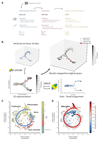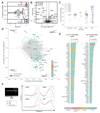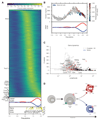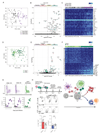Single-cell RNA-seq and computational analysis using temporal mixture modelling resolves Th1/Tfh fate bifurcation in malaria
- PMID: 28345074
- PMCID: PMC5365145
- DOI: 10.1126/sciimmunol.aal2192
Single-cell RNA-seq and computational analysis using temporal mixture modelling resolves Th1/Tfh fate bifurcation in malaria
Erratum in
-
Erratum for Research Article: "Single-cell RNA-seq and computational analysis using temporal mixture modeling resolves TH1/TFH fate bifurcation in malaria" by T. Lönnberg, V. Svensson, K. R. James, D. Fernandez-Ruiz, I. Sebina, R. Montandon, M. S. F. Soon, L. G. Fogg, A. S. Nair, U. N. Liligeto, M. J. T. Stubbington, L.-H. Ly, F. Otzen Bagger, M. Zwiessele, N. D. Lawrence, F. Souza-Fonseca-Guimaraes, P. T. Bunn, C. R. Engwerda, W. R. Heath, O. Billker, O. Stegle, A. Haque, S. A. Teichmann.Sci Immunol. 2018 Mar 9;3(21):eaat1469. doi: 10.1126/sciimmunol.aat1469. Sci Immunol. 2018. PMID: 29523583 No abstract available.
Abstract
Differentiation of naïve CD4+ T cells into functionally distinct T helper subsets is crucial for the orchestration of immune responses. Due to extensive heterogeneity and multiple overlapping transcriptional programs in differentiating T cell populations, this process has remained a challenge for systematic dissection in vivo. By using single-cell transcriptomics and computational analysis using a temporal mixtures of Gaussian processes model, termed GPfates, we reconstructed the developmental trajectories of Th1 and Tfh cells during blood-stage Plasmodium infection in mice. By tracking clonality using endogenous TCR sequences, we first demonstrated that Th1/Tfh bifurcation had occurred at both population and single-clone levels. Next, we identified genes whose expression was associated with Th1 or Tfh fates, and demonstrated a T-cell intrinsic role for Galectin-1 in supporting a Th1 differentiation. We also revealed the close molecular relationship between Th1 and IL-10-producing Tr1 cells in this infection. Th1 and Tfh fates emerged from a highly proliferative precursor that upregulated aerobic glycolysis and accelerated cell cycling as cytokine expression began. Dynamic gene expression of chemokine receptors around bifurcation predicted roles for cell-cell in driving Th1/Tfh fates. In particular, we found that precursor Th cells were coached towards a Th1 but not a Tfh fate by inflammatory monocytes. Thus, by integrating genomic and computational approaches, our study has provided two unique resources, a database www.PlasmoTH.org, which facilitates discovery of novel factors controlling Th1/Tfh fate commitment, and more generally, GPfates, a modelling framework for characterizing cell differentiation towards multiple fates.
Conflict of interest statement
Competing interests The authors declare no competing interests.
Figures






References
-
- World malaria report 2016. World Health Organization; Geneva Switzerland: 2016.
Grants and funding
LinkOut - more resources
Full Text Sources
Other Literature Sources
Molecular Biology Databases
Research Materials

